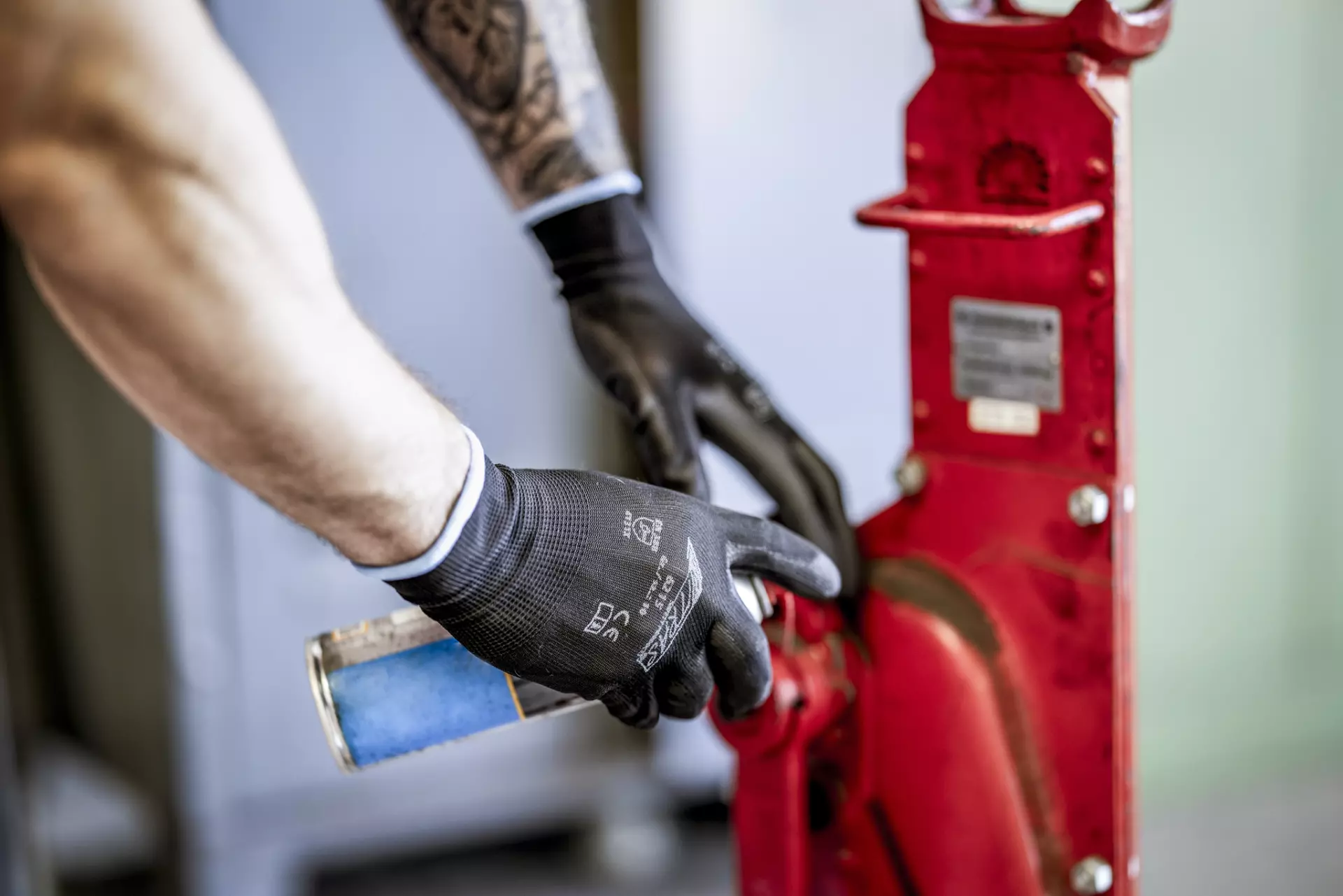

Features You'll Love

Palm Material · Polyurethane (PU), Nylon

Cuff Style · Knit
A snug knit cuff comfortably seals out debris and keeps your gloves securely in place, ensuring a comfortable and protected fit.

EN 388 · Abrasion Resistance Level 4
Offers the highest level of protection against intense rubbing and wear from rough materials.
5,92 €
Price per 12 pairs
0,49 € / pair
Choose size
Shipping fee is 4,74 € for orders under 150,00 €
Features You'll Love

Palm Material · Polyurethane (PU), Nylon

Cuff Style · Knit
A snug knit cuff comfortably seals out debris and keeps your gloves securely in place, ensuring a comfortable and protected fit.

EN 388 · Abrasion Resistance Level 4
Offers the highest level of protection against intense rubbing and wear from rough materials.
Product description
Professional work gloves featuring a nylon base material with polyurethane coating for enhanced grip and durability. The partial coating on palm and fingertips provides excellent tactile sensitivity while maintaining dexterity, certified at Level 5 according to EN ISO 21420:2020. The knitted wrist design ensures a secure fit and prevents debris entry during use.
Product Features:
- Partial PU coating on palm and fingertips
- Knitted wrist construction
- Maximum dexterity rating (Level 5)
- Breathable nylon back
- Ergonomic design for extended wear
Technical Details:
- Base material: Nylon with PU coating
- EN 388:2016+A1:2018 certification
—Abrasion resistance: Level 4
—Blade cut resistance: Level 1
—Tear resistance: Level 3
—Puncture resistance: Level 1